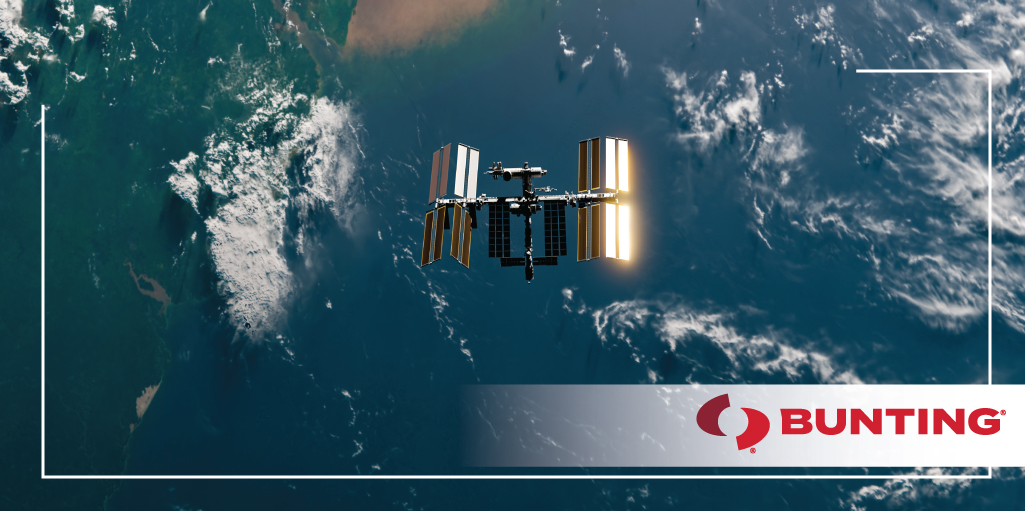2021 has been an exciting year for space travel. At the beginning of the year, spacecraft from the United States, China, and the United Arab Emirates all touched down on the surface of Mars to explore the planet and carry out valuable research. Battling billionaires Elon Musk and Jeff Bezos have both ramped up their investments in space travel, with Musk’s Space X sending a commercial crew to the International Space Station and Bezos taking a personal trip to space in one of his Blue Origin rocket ships. As we marvel at continued accomplishments in space exploration, it is important to remember that none of these achievements would have been possible without magnets.
Magnets and the Apollo 11 Mission
To start, let’s look at one of humankind’s biggest achievements—the 1969 Apollo 11 mission where a man first stepped foot on the moon. This mission would not have been possible without the Apollo Guidance Computer, which was designed by MIT and manufactured at the Raytheon Company. The memory system of this computer used magnets to generate power instead of relying on electricity, which made the system as a whole much more reliable and less susceptible to power outages.
Magnets and Satellites
As technology has advanced, the role of magnets in space exploration has only grown greater. Today, our skies are dotted with satellites. Within satellites, you can find electromagnetic coils that are key to the satellite’s function. In a satellite, the Magnetorquer (or, magnetic torquer) is responsible for controlling the attitude, that is, controlling an object’s orientation with respect to an inertial frame of reference or another entity. The Magnetorquer also controls detumbling and stabilization.
A Magnetorquer is positioned to yield an anisotropic—or, rotationally asymmetric—magnetic field spanning an extended area. To control this field, current flow is switched on or off through the coils. This is typically done under computerized feedback control. The actual magnets are anchored to the craft mechanically, meaning that any magnetic force they exert on the surrounding magnetic field will lead to a magnetic reverse force. Then, this results in mechanical torque around the vessel’s center of gravity. This makes it possible to pivot the craft freely around in a known local gradient of the magnetic field by only using electrical energy.
NASA’s Alpha Magnetic Spectrometer
In 2011, the Space Shuttle Endeavour carried NASA’s state-of-the-art particle physics detector, the Alpha Magnetic Spectrometer (AMS-02), into space. It was mounted on the International Space Station for the purpose of detecting and measuring the antimatter in cosmic rays. By doing so, it would provide essential information to researchers studying the formation of the universe and searching for evidence of dark matter.
At the International Space Station, radiation and particles pass through a series of detectors in the Alpha Magnetic Spectrometer. Then, the characteristics of the particles passing directly from the top to the bottom are recorded. Some examples are:
- A transition radiation detector measures the velocities of the highest energy particles.
- The upper time of flight counter and lower time of flight counter measure the velocities of lower energy particles.
- A star tracker determines the orientation of the module in space.
- A silicon tracker measures the coordinates of charged particles in the magnetic field.
- A permanent magnet allows for charged particles to be identified by bending the path of the particles.
- An anti-coincidence counter rejects any stray particles that happen to enter through the sides.
- A ring imaging Cherenkov detector is able to provide extremely accurate velocity measurements of even the fastest moving particles.
- An electromagnetic calorimeter measures the particles’ total energy.
In the Alpha Magnetic Spectrometer, a 1200 kilogram (2,645 pound) permanent neodymium magnet assembly generates the spectrometer’s magnetic force—fields of up to 0.15 Tesla. In original design sketches for the AMS-02, a cryogenic superconducting magnet had been considered, but was ultimately rejected due to its shorter magnetic lifespan.
A Magnetic Future for Space Travel
It is a firmly held belief by many scientists that magnets possess the key to future expansive space travel. Some scientists imagine long distance space exploration being made possible by harnessing magnetic fields to power spacecrafts to the farthest reaches of the universe.
While it’s thrilling to imagine the future, the present is quite exciting, too. Currently, Bunting-DuBois works closely with aerospace applications, and is familiar with the many considerations involved with designing magnets and magnetic assemblies intended for use in extreme environments. To learn more about our design and manufacturing capabilities, contact Bunting-DuBois today.

